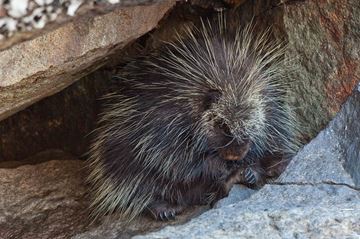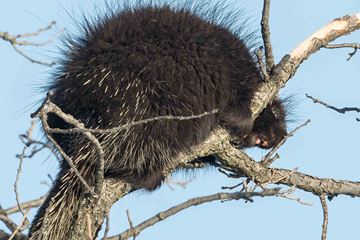So yesterday a former member of Worth A Dam who now works at the animal shelter mentioned that an animal control officer brought a beaver found in Martinez to Lindsey Wildlife hospital and described him as wet looking and confused and shared this photo.

So i called Cheryl to ask if she has any friends working there right now and found out that they had changed vets again and that she didn’t know for sure. it’s always hard to cold call Lindsey wildlife hospital because they tend to be – propietary – about the animals in their care. So it works better if someone is introduced to me, or knows Cheryl before hand. It’s frankly a little intimidating to call as a nonprofessional.
But even without an established contact it had to be done anyway. i worked up my best serious voice and called the hospital, explaining who I was and that I heard they might have been brought a beaver. The woman was oddly very solicitous on the phone and explained that one had just come in. I soon found out why when she said, surprisingly, ‘Yes I know who you are. It’s an honor to meet you! I just finished reading Eager.“
Well! That was a surprise. We chatted for a moment about Eager and how good the book was and she said how surprising it was to find a chapter about Martinez and how much she enjoyed it. I asked about the sex of the beaver, which she said ‘you know reading eager you learn its hard to tell!” And then I asked about the weight which would be more straight forward.
13 lbs.
She read a little from the notes saying that it looked ’emaciated” and ‘confused”. They had it down as an adult but I told her that wasn’t adult size. For a good while I was relieved because if it was that small it wasn’t a parent or our two year old which meant it wasn’t ours.
A quick glance at the calendar told me that today is February 1st and I’ve always said that in our area February is dispersal month So maybe it was a early disperser coming up the creek and getting lost?
i told the helpful rehabber that we would be happy to help if we could, with transport or funds or information. And she added my name and phone number to the file. i posted about the beaver on the Martinez FB page because I figured somebody saw or could tell me something. And learned that the beaver had been photographed near Armandos in the middle of the street that morning. Poor little guy.
I called back Cheryl and told her what i’d learned and we chatted about the mystery. She wondered if there could have been another kit we didn’t know about born in 2018. At first i was remembering the weird birthdate of our first kit and thinking 13 lbs still wouldn’t be large enough for a 16 month old kit. And then I went back and looked at the footage and realized this kit was born at the regular time, which, if there was a sibling we didn’t know about, would make him about 10 months, which could easily be around 13 lbs.
So this was the kit we knew about that Moses filmed in June. it’s possible he had a brother or sister that we didn’t know about? But we haven’t seen any activity around the Susana street dam so i was thinking, since Cassy shared that photo of the beaver at Arch street, that they might have moved upstream? And why would it look “emaciated?” A 13 lb 10 month old kit is just about right?
I will try and find out more today. i’m not even sure it made it through the night. Stay tuned.
 Oh and GOOD LUCK TO JON today. Who will either become an American- eligible citizen today, or just another really frustrated commuter. The Queen wishes you good luck and i and the Beavers have faith in you!
Oh and GOOD LUCK TO JON today. Who will either become an American- eligible citizen today, or just another really frustrated commuter. The Queen wishes you good luck and i and the Beavers have faith in you!







 I think it safe to say that everyone knows that beavers live in water, leaving its safety only to forage on land or to sleep inside a lodge. While they eat both aquatic and terrestrial herbaceous plants, through much of the year, especially in winter, much of their diet consists of the bark and twigs of trees, especially poplar.
I think it safe to say that everyone knows that beavers live in water, leaving its safety only to forage on land or to sleep inside a lodge. While they eat both aquatic and terrestrial herbaceous plants, through much of the year, especially in winter, much of their diet consists of the bark and twigs of trees, especially poplar. Apart from starvation and falling out of trees, Porcupines face another challenge. Some are shot by humans because they damage trees; others die when they cross highways or stop to glean salt from the asphalt. Porcupines are slow moving animals built for climbing, not running, and thus are prone to being hit by cars. They need not run from predators because they own a powerful defence: modified hairs known as quills.
Apart from starvation and falling out of trees, Porcupines face another challenge. Some are shot by humans because they damage trees; others die when they cross highways or stop to glean salt from the asphalt. Porcupines are slow moving animals built for climbing, not running, and thus are prone to being hit by cars. They need not run from predators because they own a powerful defence: modified hairs known as quills.






































